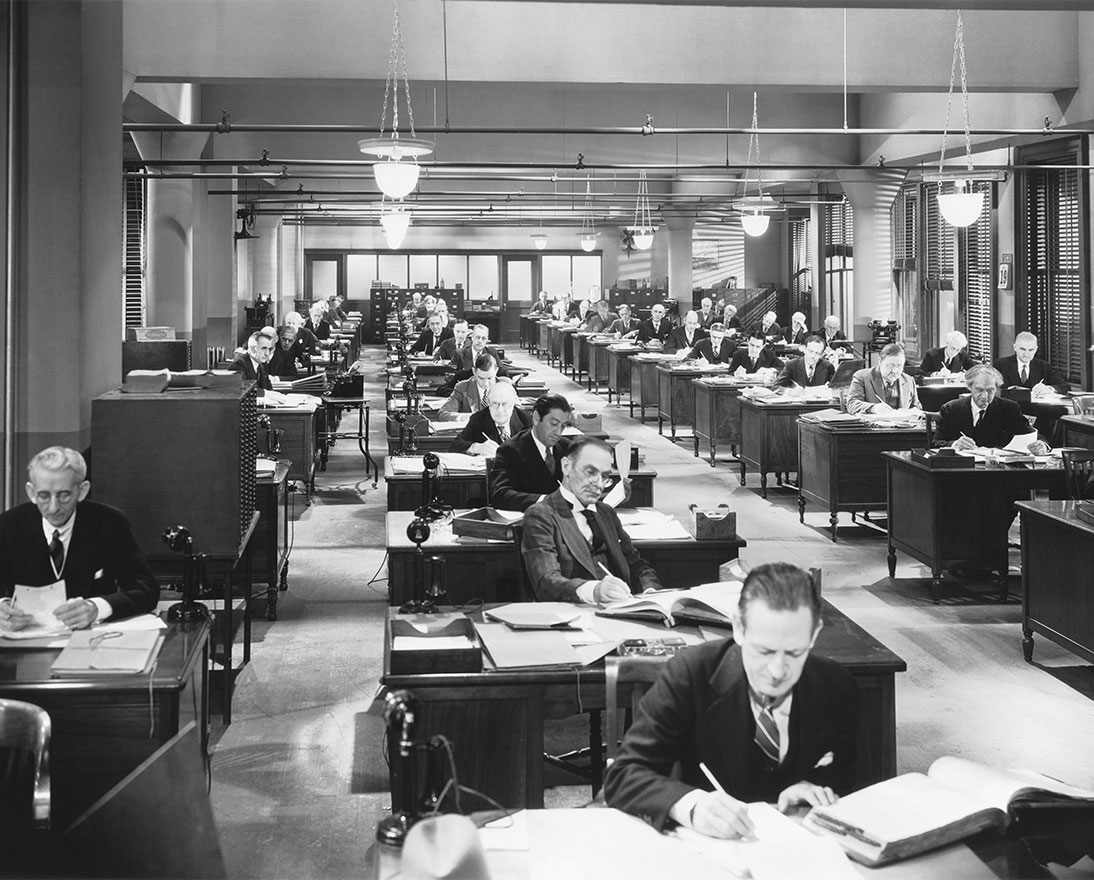How the metaverse could change the future of work
TechnologyArticleJuly 7, 20226 min read
The metaverse promises to create imaginative and creative new ways for people to collaborate and work online. Technology companies are betting big on the potential for work in the metaverse. But will virtual reality workplaces catch on?
“We believe the metaverse will be the successor to the mobile internet,” said Facebook founder Mark Zuckerberg in an October online event. In fact, Facebook believes so strongly in the metaverse that at the same time Zuckerberg announced it was changing its name to Meta. Facebook is now relegated to being a mere product in Meta’s portfolio, alongside the likes of WhatsApp, Instagram and Messenger.
It’s fair to say that the reaction to Zuckerberg’s announcement was not excitement but confusion. People who didn’t watch the 90-minute presentation were confused – and so were some of those who did watch it. Put simply, the metaverse is a 3D virtual world where people get together with friends and family, play games, shop, enjoy virtual concerts and, of course, work. But for the purposes of this article, let’s just focus on work.
If Zuckerberg and other technologists are to be believed, the hybrid work world of the future is not only about splitting time between home and office, but also about spending a significant amount of time in metaverse meetings with virtual characters teleporting instantly to meetings in hologram form, and even enjoying a getaway to a metaverse beach when you need to work in peace.
The metaverse promises to bring new levels of social connection and mobility, while creating imaginative and creative new ways for people to collaborate and work online. From team collaboration, to learning and development, to company culture; the metaverse could transform the future of work and business.
“For me, one of the most exciting opportunities of the metaverse is in the context of the workplace,” say Joao Andre Neiva, Head of Cyber at Zurich Insurance Groups’ Global Ventures. “It’s incredible how we still use email as the main form of communication, collaboration and file sharing at work. The metaverse could create a more immersive experience that improves internal virtual collaboration.”
But how exactly will all of this work? The answer is not entirely clear.
Investing in the metaverse
For the moment, entry to the metaverse requires a virtual reality headset, which positions a screen in front of your eyes and tracks your head movement to place you in an immersive environment. Augmented or mixed reality, meanwhile, doesn’t place you in an immersive environment but instead overlays computerized elements on top of the real world.
One example would be showing a repair worker how to fix a machine by using a camera to identify components and then overlaying instructions. This requires glasses, like Microsoft’s HoloLens or Google’s Glass. The latter is already being used by logistics companies and in hospitals because it allows people to work hands-free.
Chinese companies including Tencent and Alibaba are making plans for their own metaverse tools and so are Chinese cities, many of which have mentioned metaverse plans for entertainment, manufacturing and public services in their official economic forecasts. Japanese tech giant Softbank, has put USD 150 million into a South Korean metaverse platform called Zepato. Meanwhile Disney, which has described the metaverse as “the next great storytelling frontier”, has recently appointed an executive to lead the entertainment giant’s strategy for the metaverse.
The virtual office
There are good reasons for all this investment. As the COVID-19 pandemic demonstrated, people like to work remotely – at least some of the time. However, hybrid meetings – where some attendees are together and others remote – are notoriously tricky. What tends to happen is that the remote participants lose out because they can’t see the presentation screen, they aren’t called on to speak, they can’t be heard, or any number of other problems. The metaverse option gets around this by ensuring that either everyone is in a virtual space or the remote attendees have an avatar representing them at the meeting.
Making that work can be great for businesses, who can employ the best talent from anywhere – not just those who are within commuting range of the office. It’s good for employees because they can work remotely when it suits them or ditch the commute entirely. And it is even good for the environment. The occasional virtual meeting could cut down on how often people need to fly, for example.
As well as improving interaction between employees, the metaverse could also allow real-time connection with potential customers says Zurich’s Neiva. “Imagine if we are in a workshop designing a new solution for a specific customer segment. We could brainstorm different features and then enter ‘real-time’ a virtual location where these customers hang out, interact with them, and go back to our meeting with some concepts validated. I believe that in a few years from now this will be possible if we can address existing technology, legal and regulatory gaps.”
However, don’t expect to be working in the metaverse in 2022. It is going to take time for all this technology to become affordable and reliable. And it’s a big jump for people who aren’t used to it. As Nick Hedderman of Microsoft UK told Wired: “Moving from 2D to 3D environments can allow more to be done, but people will need easing into 3D interactions.”
Then there is the fact that people don’t really like wearing headsets – something that has held back the uptake of virtual reality since the first commercial headsets were released almost 10 years ago. They crush hair and smudge makeup, can be tricky if you wear glasses and aren’t great for coffee fans. In an interview with the Financial Times at the end of 2021, conducted in the metaverse, naturally, Meta’s Head of Global Affairs and Communications Nick Clegg said: “This wretched headset is too bulky for me to drink my coffee.”
The gaffe was picked up instantly on social media and it perhaps explains the striking lack of headsets in Meta’s metaverse presentation. The metaverse solves some very real problems about the modern world of work. But it won’t become reality for the majority of us unless some technological problems and other legal and regulatory challenges are ironed out.



